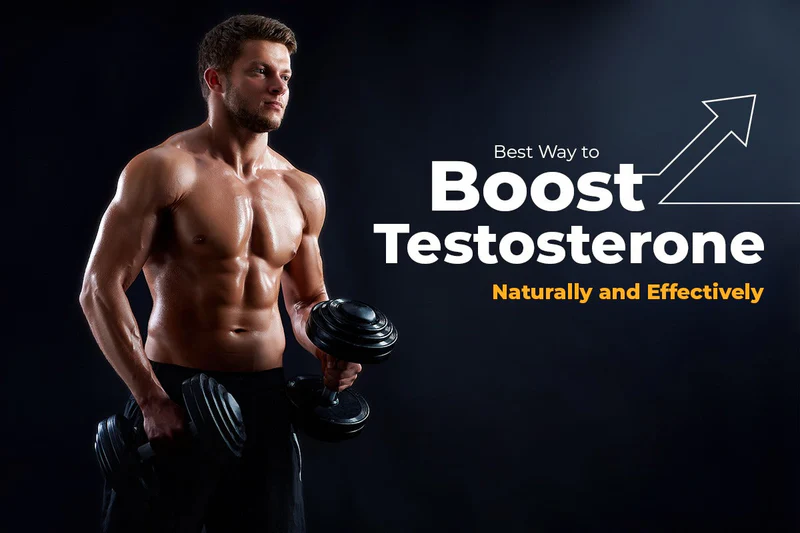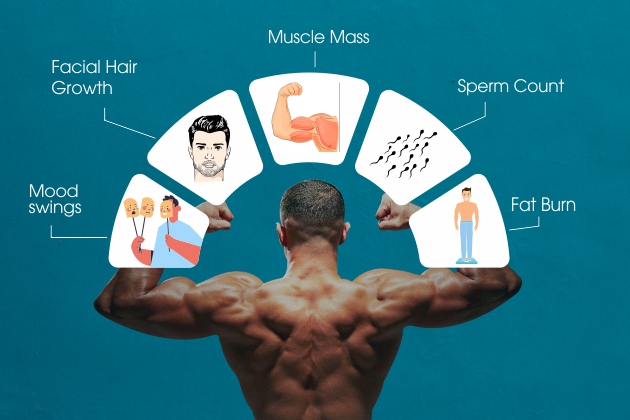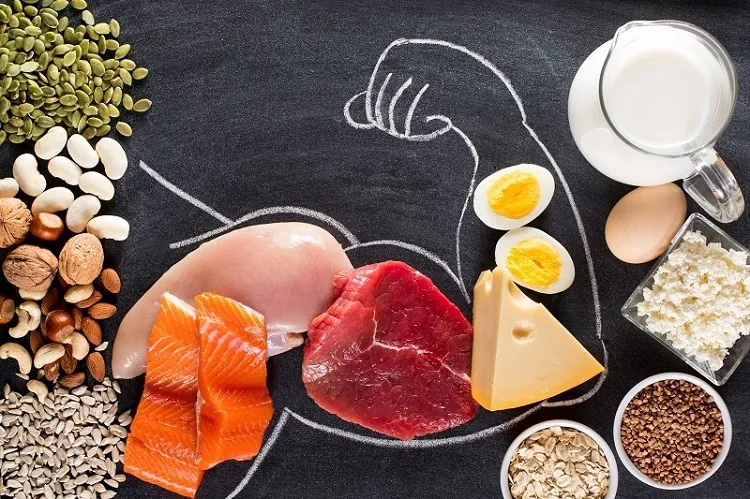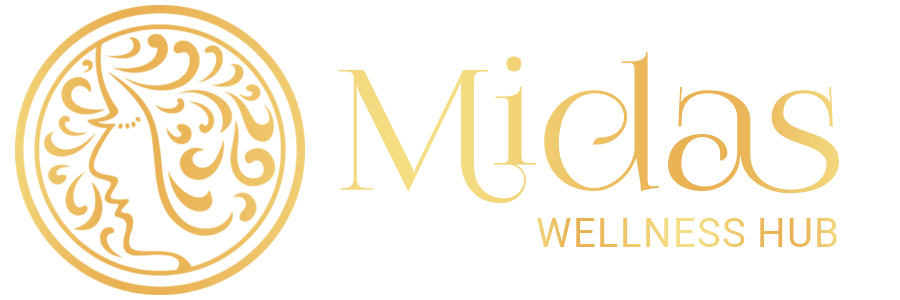
7 Ways Men in Their 20s Can Boost Their Testosterone Levels – And How Much Medicine Can Really Help

7 Ways Men in Their 20s Can Boost Their Testosterone Levels – And How Much Medicine Can Really Help
When we think of low testosterone, most people imagine older men. But in today’s fast-paced lifestyle, even men in their 20s are showing signs of reduced testosterone levels. Long working hours, late-night stress, poor diet, and inactivity have made hormonal imbalance a growing concern in younger men.
At Midas Wellness Hub, we believe that wellness is not just about looking fit, but about maintaining optimal internal balance. Hormones like testosterone play a central role in physical energy, mood, focus, and long-term health. Understanding how to naturally boost and maintain testosterone can make a major difference in your confidence, energy, and overall performance.
This blog explores seven evidence-based, natural ways to support healthy testosterone levels, and discusses when and how medicine or treatment can actually help.
Understanding Testosterone and Its Role

Testosterone is the primary male hormone responsible for muscle growth, bone density, sperm production, sex drive, mood, and mental clarity. It also affects fat distribution, motivation, and overall vitality.
Normally, men reach peak testosterone levels during their late teens to mid-20s. After 30, levels may decline slowly by 1% per year. However, many young men today experience symptoms of low testosterone much earlier due to poor lifestyle habits, nutritional deficiencies, and chronic stress.
Common Signs of Low Testosterone in Young Men
- Constant fatigue and low energy even after sleep
- Difficulty gaining muscle or losing fat
- Mood swings or irritability
- Reduced sex drive
- Lack of focus or motivation
- Sleep issues or poor recovery after exercise
If you identify with more than a few of these, it’s worth paying attention to your habits and lifestyle.
1. Prioritize Restorative Sleep

One of the most overlooked factors in hormone balance is sleep. Most testosterone release happens during deep sleep, particularly during the REM cycle. Even one week of reduced sleep can significantly lower testosterone levels.
A study from the University of Chicago found that men who slept for only 5 hours a night for one week saw a 10–15% drop in testosterone. Poor sleep also increases cortisol (the stress hormone), which suppresses testosterone production.
How to Improve Sleep Quality
- Maintain a consistent sleep schedule, even on weekends
- Avoid screens at least one hour before bedtime
- Keep your room cool, dark, and quiet
- Avoid caffeine after 4 PM
- Engage in a relaxing routine such as reading, stretching, or deep breathing before sleep
Good sleep doesn’t just raise testosterone, it improves muscle repair, metabolism, and mental clarity.
2. Focus on Strength Training
Exercise is one of the most powerful natural boosters of testosterone, especially resistance and weight training. When you lift weights, your body produces more anabolic hormones to support muscle repair and growth.
High-intensity exercises like squats, bench presses, and deadlifts are particularly effective. They engage multiple muscle groups and stimulate the body to release more testosterone and growth hormone.
- Training Tips
- Train large muscle groups 3–4 times a week
- Keep workouts intense but not overly long (45–60 minutes)
- Prioritize recovery, overtraining can cause fatigue and lower testosterone
- Combine strength training with short bursts of cardio rather than long hours of endurance work
- Consistency in exercise also helps reduce body fat, which further supports hormone balance.
3. Nourish Your Body with the Right Nutrients

Your diet has a direct influence on testosterone production. The body needs specific vitamins and minerals to create hormones efficiently. Nutritional deficiencies, especially in zinc, magnesium, vitamin D, and omega-3 fats, can interfere with normal testosterone synthesis.
Nutrients that Support Testosterone
- Zinc: Found in eggs, meat, seeds, and lentils. Essential for hormone production.
- Magnesium: Improves sleep quality and supports muscle recovery. Found in spinach, nuts, and dark chocolate.
- Vitamin D: Acts like a hormone and is vital for testosterone. The best source is sunlight exposure.
- Healthy fats: Olive oil, nuts, avocados, and fatty fish support hormone balance.
- Protein: Supports muscle repair and healthy metabolism.
A balanced plate for optimal testosterone includes lean proteins, complex carbs, and healthy fats. Avoid ultra-processed foods, refined sugar, and excessive alcohol, all of which contribute to insulin resistance and hormonal imbalance.
4. Maintain a Healthy Body Composition
Excess body fat is one of the strongest predictors of low testosterone in men. Fat cells, especially around the abdomen, convert testosterone into estrogen through a process called aromatization. This not only lowers testosterone but can also lead to fatigue, low libido, and mood fluctuations.
- Steps to Improve Body Composition
- Focus on sustainable fat loss instead of crash diets
- Combine regular strength training with moderate cardio
- Ensure adequate protein intake (1.2–1.6 g per kg of body weight)
- Avoid frequent snacking and late-night eating
- Include fiber-rich foods to improve digestion and hormone metabolism
- Even a 5–10% reduction in body fat can lead to a measurable improvement in testosterone levels.
5. Manage Stress and Cortisol Levels
Chronic stress is one of the biggest hormone disruptors for young men. When stress levels rise, cortisol increases, directly suppressing testosterone production. High cortisol also promotes fat storage, particularly around the abdomen.
- Stress Management Strategies
- Engage in 15–20 minutes of daily mindfulness or meditation
- Practice deep breathing exercises
- Take short breaks during work to avoid mental burnout
- Spend time outdoors and away from screens
- Get adequate sleep to regulate the stress response
Small, consistent actions can have a large impact. Managing stress isn’t just about emotional balance, it’s a direct way to preserve your hormonal health.
While occasional social drinking is fine, frequent or heavy alcohol intake affects the liver and disrupts hormone metabolism. The liver plays a crucial role in regulating testosterone and estrogen levels. Alcohol also interferes with sleep, increases inflammation, and damages testicular cells responsible for testosterone production.
Similarly, nicotine and recreational substances can reduce blood flow and damage reproductive health.
Better Alternatives
- Stay hydrated with water, herbal teas, or electrolyte-infused drinks
- Limit alcohol to weekends or special occasions
- Replace smoking breaks with short walks or breathing exercises
- Reducing these habits helps the body naturally reset its hormonal rhythm and improves energy, sleep, and focus.
7. Reduce Screen Time and Stay Physically Active
Sedentary behavior is an under-recognized reason for declining testosterone levels. Long hours on screens reduce movement, expose you to blue light (which disrupts melatonin and sleep), and contribute to poor posture and fatigue.
How to Stay Active
- Move every hour for at least 5 minutes
- Take phone calls while standing or walking
- Spend at least 20–30 minutes outdoors daily
- Stretch before bed to relax your body
- Every small movement adds up to better blood flow, reduced inflammation, and improved overall vitality.
When Should Medicine or Treatment Be Considered?
If lifestyle changes don’t bring improvement and you still experience symptoms of low testosterone, it’s important to consult a qualified medical practitioner. At Midas Wellness Hub, we emphasize proper diagnosis and functional evaluation before suggesting any hormonal treatment.
Step 1: Testing
A simple blood test can measure total and free testosterone levels, along with other related hormones like LH, FSH, prolactin, and cortisol. Optimal testosterone levels in men usually range between 300 to 1000 ng/dL. Anything consistently below 300 may require intervention.
Step 2: Identifying the Cause
Low testosterone can result from:
- Chronic stress and sleep deprivation
- Nutritional deficiencies
- Excessive alcohol or smoking
- Thyroid or pituitary issues
- Overuse of anabolic supplements or steroids
Identifying the underlying cause helps determine whether the issue is reversible naturally or requires medical support.
Step 3: Treatment Options
1. Nutritional Supplements:
Vitamin D3, zinc, magnesium, and ashwagandha have shown mild improvement in testosterone levels by 10–20%. These are safe and can be added under supervision.
2. Medical Therapy:
Testosterone replacement therapy (TRT) is reserved for men with confirmed low testosterone who do not respond to lifestyle interventions. TRT can restore normal levels and improve energy, muscle mass, and mood. However, it must be prescribed and monitored carefully.
3. Caution with Unsupervised Use:
Using testosterone boosters or anabolic steroids without guidance can suppress the body’s natural hormone production, causing long-term side effects like infertility, acne, hair loss, and heart issues.
At Midas Wellness Hub, the goal is to treat the root cause, not just the symptom. Our approach integrates nutrition, sleep, fitness, and internal balance to optimize hormone function naturally before considering medication.
The Balance Between Nature and Medicine
Medicine can play a role, but it should not replace lifestyle. For men in their 20s, most testosterone issues are lifestyle-related and reversible. Sleep, exercise, stress management, and balanced nutrition are the true foundations of hormonal health.
When supported by medical guidance and regular monitoring, short-term supplementation or therapy can complement natural efforts, but relying solely on medication without lifestyle changes is never sustainable.
Final Thoughts
Your 20s are the foundation of your long-term health. Building strong habits now will not only support testosterone but will also improve your overall physical and mental well-being for years to come.
Testosterone is not just about masculinity, it’s about vitality, drive, and balance. The key is to focus on a lifestyle that nurtures your body from within.
At Midas Wellness Hub, our experts blend functional medicine, nutrition, and personalized treatments to help you achieve optimal hormone balance. Whether you are experiencing early signs of fatigue, stress, or low energy, we help you identify the root cause and restore balance, naturally, safely, and effectively.
Your best energy, focus, and performance begin when your body’s internal rhythm is aligned. Take care of it now, and it will take care of you for life. Book your Consultation Now.


While medication can seem like an easy fix, it’s refreshing to see this post emphasize natural ways to improve testosterone. The tips on sleep, exercise, and stress management are definitely game-changers for overall health.
Yes, you’re right! Functional medicine plays a key role in identifying underlying imbalances. When combined with proper sleep, exercise, and stress management, it creates lasting improvements in hormone health.
For more details contact us on 7506019315 or
visit us Shop no 2, Krishna Koyna, Kastur Park Rd, Kastur Park, Borivali West, Mumbai, Maharashtra 400092